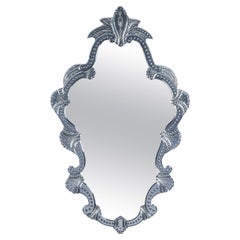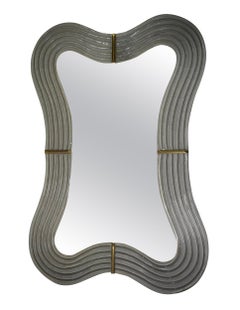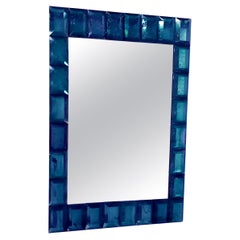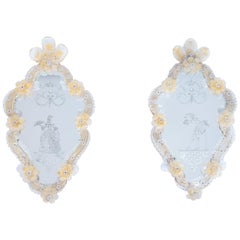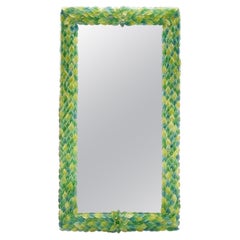Murano Glass Mirrors
2010s Italian Other Murano Glass Mirrors
Art Glass, Mirror, Murano Glass
1980s Italian Mid-Century Modern Vintage Murano Glass Mirrors
Brass
1990s Italian Mid-Century Modern Murano Glass Mirrors
Brass
2010s Italian Other Murano Glass Mirrors
Art Glass, Mirror, Murano Glass
Early 20th Century Italian Baroque Murano Glass Mirrors
Gold
2010s Italian Mid-Century Modern Murano Glass Mirrors
Mirror, Murano Glass, Wood
2010s Italian Mid-Century Modern Murano Glass Mirrors
Murano Glass
2010s Italian Other Murano Glass Mirrors
Iron
21st Century and Contemporary Italian Murano Glass Mirrors
Murano Glass
2010s Italian Organic Modern Murano Glass Mirrors
Brass
2010s Italian Art Deco Murano Glass Mirrors
Brass, Silver Leaf
2010s Italian Mid-Century Modern Murano Glass Mirrors
Brass
2010s Italian Other Murano Glass Mirrors
Art Glass, Murano Glass
2010s Italian Organic Modern Murano Glass Mirrors
Brass, Silver Leaf
21st Century and Contemporary Italian Modern Murano Glass Mirrors
Brass
2010s Murano Glass Mirrors
Murano Glass
2010s European Murano Glass Mirrors
Murano Glass
2010s Italian Mid-Century Modern Murano Glass Mirrors
Brass
2010s Italian Art Deco Murano Glass Mirrors
Brass
Early 2000s Italian Modern Murano Glass Mirrors
Brass
2010s Italian Organic Modern Murano Glass Mirrors
Art Glass, Cut Glass, Murano Glass, Wood
2010s Italian Mid-Century Modern Murano Glass Mirrors
Brass
21st Century and Contemporary Italian Murano Glass Mirrors
Brass
Early 2000s Italian Mid-Century Modern Murano Glass Mirrors
Brass
2010s Italian Art Deco Murano Glass Mirrors
Brass
2010s Italian Organic Modern Murano Glass Mirrors
Brass
2010s Italian Industrial Murano Glass Mirrors
Metal
21st Century and Contemporary Italian Modern Murano Glass Mirrors
Murano Glass
Early 2000s Italian Mid-Century Modern Murano Glass Mirrors
Brass
2010s Italian Art Deco Murano Glass Mirrors
Art Glass, Mirror, Murano Glass, Wood
1940s Italian Other Vintage Murano Glass Mirrors
Murano Glass
2010s Italian Modern Murano Glass Mirrors
Brass
1930s Italian Art Deco Vintage Murano Glass Mirrors
Brass
2010s Italian Murano Glass Mirrors
Brass
2010s Italian Murano Glass Mirrors
Brass
21st Century and Contemporary Italian Art Deco Murano Glass Mirrors
Art Glass, Murano Glass
2010s Italian Expressionist Murano Glass Mirrors
Aluminum
20th Century Italian Rococo Revival Murano Glass Mirrors
Glass, Mirror, Murano Glass
21st Century and Contemporary Italian Art Deco Murano Glass Mirrors
Brass
2010s Italian Mid-Century Modern Murano Glass Mirrors
Brass
2010s Italian Murano Glass Mirrors
Murano Glass
Late 20th Century Italian Murano Glass Mirrors
Murano Glass
2010s Italian Post-Modern Murano Glass Mirrors
Art Glass, Murano Glass, Plywood
2010s French Mid-Century Modern Murano Glass Mirrors
Brass
2010s Italian Mid-Century Modern Murano Glass Mirrors
Brass
2010s Italian Mid-Century Modern Murano Glass Mirrors
Brass
2010s Italian Modern Murano Glass Mirrors
Brass
2010s Italian Mid-Century Modern Murano Glass Mirrors
Brass
1930s Italian Art Deco Vintage Murano Glass Mirrors
Murano Glass
Early 2000s Italian Mid-Century Modern Murano Glass Mirrors
Brass
Mid-20th Century Italian Art Deco Murano Glass Mirrors
Gold, Bronze
2010s Italian Mid-Century Modern Murano Glass Mirrors
Brass
2010s Italian Modern Murano Glass Mirrors
Brass
Early 2000s Italian Mid-Century Modern Murano Glass Mirrors
Brass
21st Century and Contemporary Italian Organic Modern Murano Glass Mirrors
Brass, Gold Leaf, Silver Leaf
Early 2000s Italian Mid-Century Modern Murano Glass Mirrors
Brass
Early 2000s Italian Mid-Century Modern Murano Glass Mirrors
Brass
2010s Italian Industrial Murano Glass Mirrors
Metal, Silver Leaf
2010s Italian Art Deco Murano Glass Mirrors
Brass, Silver Leaf
21st Century and Contemporary Italian Mid-Century Modern Murano Glass Mirrors
Brass
Antique and Vintage Murano Glass Mirrors for Sale on 1stDibs
As vanity tables and wall hangings are enjoying revivals of interest, another home furnishing is also getting a second look in our digital era — decorative mirrors. And in lots of interiors, you can't beat a classic, which is why you should browse the exquisite collection of antique and vintage Murano glass mirrors for sale on 1stDibs.
While polished metal mirrors have existed since ancient times, authentic Venetian glass mirrors are thought to have first been produced on the Venetian island of Murano, in Italy, beginning in the 1500s (some research points to 1300 for Venetian mirrors). These mirrors feature Murano glass, named for the island, where glassmaking has been practiced for centuries, using a variety of artisanal processes. The glass is identifiable by its richly layered colors and characteristic gold or silver flecks inside the glass.
Set in ornate frames frequently bedecked with gold highlights or floral leaf designs, Venetian glass mirrors were handmade by artisans using refined, expert techniques for royalty and for members of the upper class. By the 17th century, Venetian mirrors were in high demand. Because antique Venetian glass mirrors are still very popular today, there are many knockoffs on the market. Today’s authentic Venetian mirrors are still produced only on the island of Murano.
Every antique Murano chandelier, floor lamp, vase and mirror is unique. Authentic Murano glass often has small imperfections and irregular shapes due to the freeform creation process. This glass introduces dazzling pops of colors and provocative forms to your dining table, and mid-century Murano glass is particularly sought after by today’s collectors.
One of the earliest Venetian glass furnaces is believed to have been established as far back as the 8th century. While Murano glass is traditionally known for being blown glass, there are also Murano glass beads and mosaics, and the art of Venetian glassblowing has seen a range of different techniques evolve over the course of its long history. These techniques include calcedonio, millefiori and more, and enameling and gilding are also practiced at the furnaces. The celebrated filigrana technique is as old as Renaissance-era Italy, with origins in the 16th century.
There are many Murano glassmakers who have gained renown all over the world.
Ercole Barovier left an indelible mark on the world of Italian modernist glassmaking, for example — his vibrant use of color and exploration of innovative techniques yielded mirrors, glass vases, chandeliers and decorative objects that stand out in any interior many decades later. Barovier’s manufactory was eventually renamed Barovier & Toso, a name under which the company still operates today.
Archimede Seguso, whose company was later renamed Seguso Vetri D’Arte, redefined a 650-year family history of Murano glass-making with brilliance and novel techniques, elevating him to an exemplar for the maestros of his time as well as for future generations of glassmakers.
Founded in 1921 by Milanese lawyer Paolo Venini and antiques dealer Giacomo Cappellin, Venini & Co. played an important role in pairing forward-thinking modernist designers with skilled glassblowers. In Venini’s early years, the firm was led by visionary art directors Napoleone Martinuzzi and Vittorio Zecchin, and would eventually collaborate with Gio Ponti, Massimo Vignelli and Finnish designer Tapio Wirkkala. In 1925, Venini earned the Grand Prix at the International Exhibition of Modern Decorative and Industrial Arts — the design fair that introduced the Art Deco style to the world.
The story of Salviati glass, which supported the revival of Venice’s flagging Murano glass industry in the 19th century, began with Vicenza-born lawyer and entrepreneur Antonio Salviati whose love of Murano glass art and mosaics inspired him to establish his own mosaic and glass manufacturing firm.
Glamorous and elegant, antique Venetian mirrors obviously have their practical uses for any room in your house or apartment, but these works are versatile.
Given the broad array of shapes and sizes in which antique Venetian glass mirrors can be found — as well as the variety of designs — these mirrors can also be utilized as a decorative focal point, as if you’re hanging a painting or positioning a sculpture to brighten an otherwise drab corner of your home. Antique Venetian mirrors can be used in formal dining settings, where the opportunity for reflecting chandelier light or natural light from large windows is present, or even a bathroom, where the piece can be as useful as it is tasteful.
Find antique and vintage Murano glass wall mirrors and other Murano glass mirrors on 1stDibs.
Read More
20 Artfully Crafted Mirrors to Frame Your Reflection
In "Object Permanence 4," on view at the 1stdibs Gallery, Emma Holland Denvir and Leah Ring have brought together pieces that range from polished to playful.
Unexpected Furniture Pieces Made from Clay
A new generation of creative minds is reinventing the use of clay through sculptural forms and bold ideas.
5 Standout Contemporary Mirrors (and How to Decorate with Them)
Leading talents tell us what goes into their mirrored creations and where to put them on a wall.
12 Rooms with Dramatic, Unexpected Mirrors
These are the fairest of them all.
